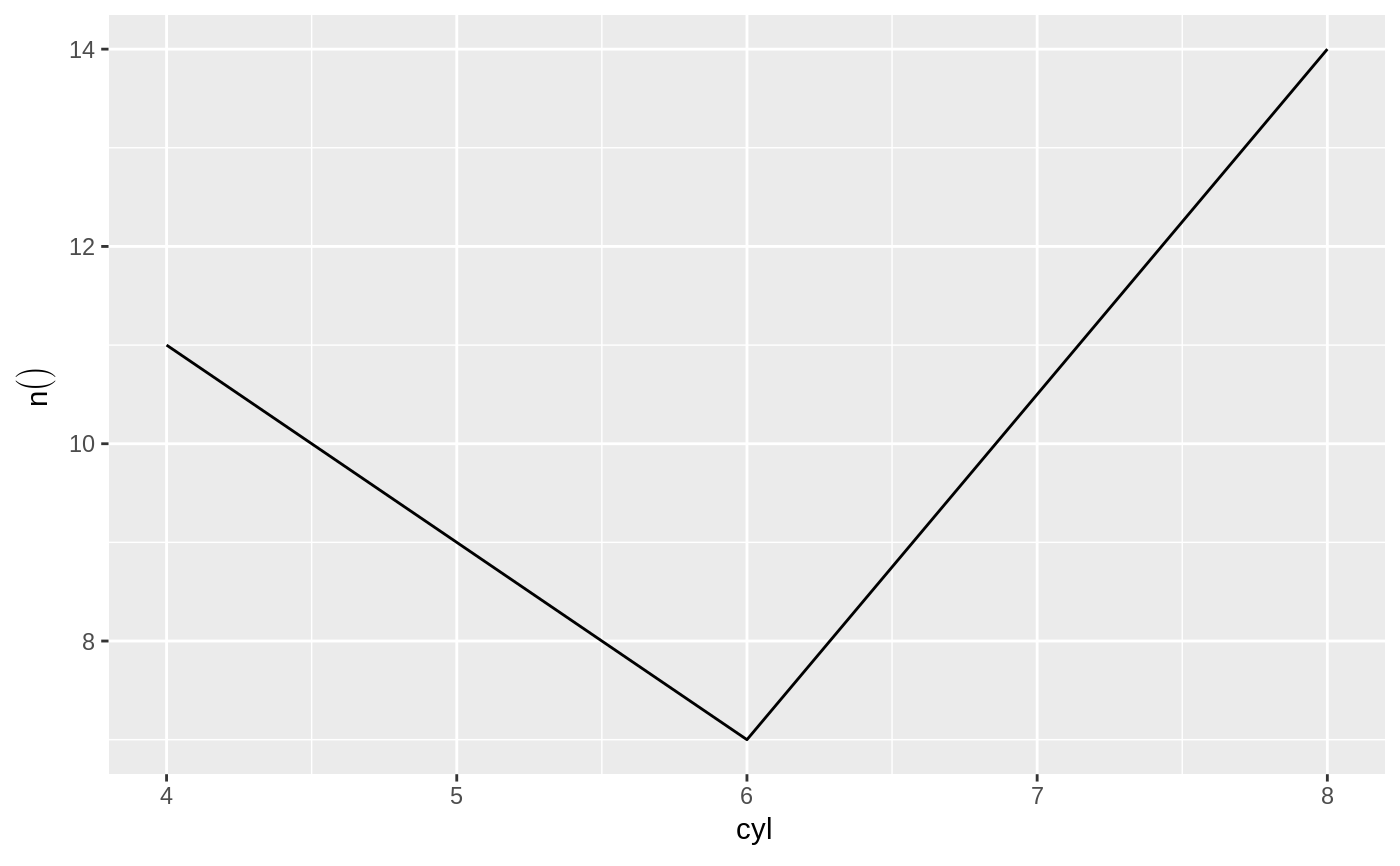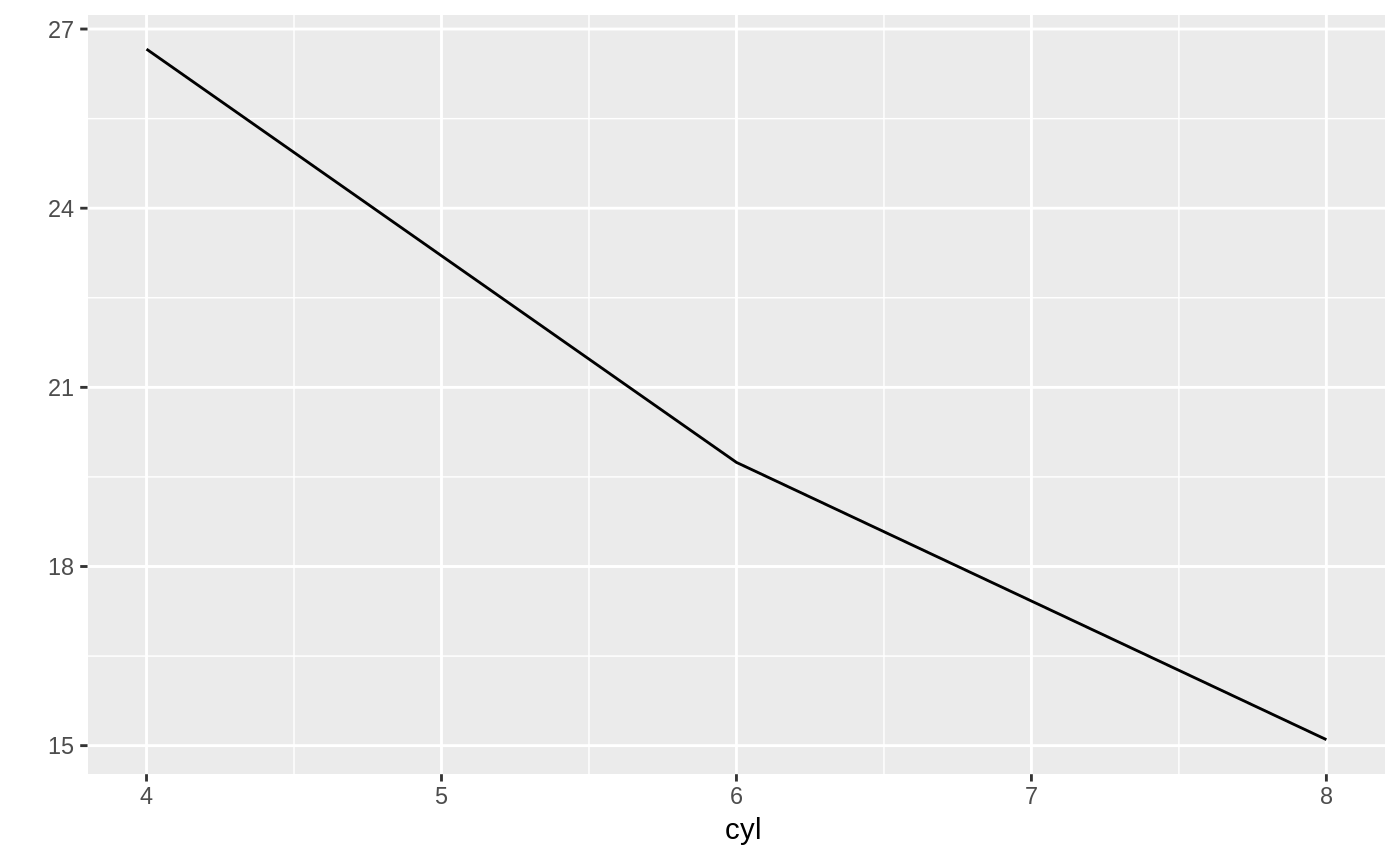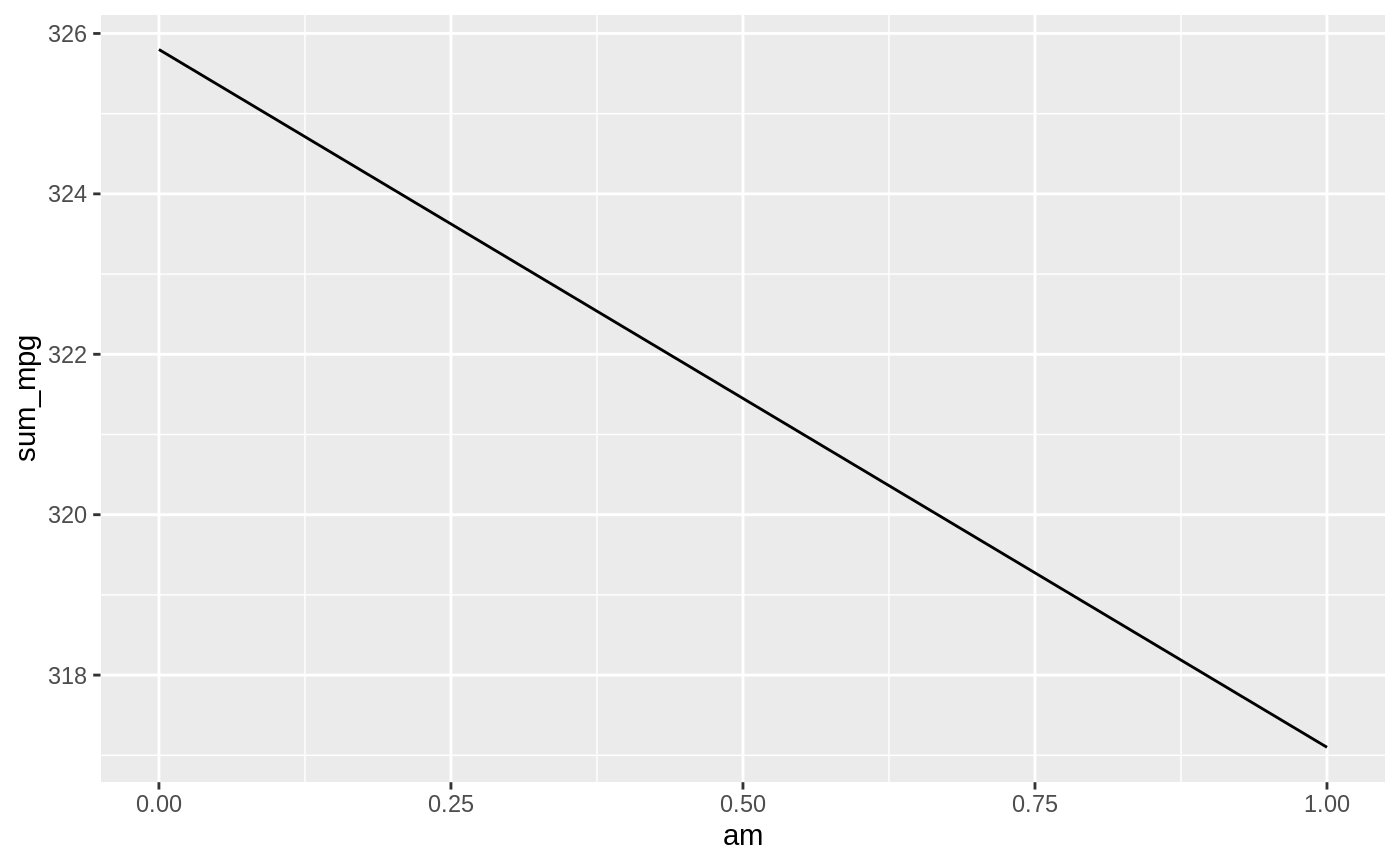Uses very generic dplyr code to aggregate data and then `ggplot2` to create a line plot. Because of this approach, the calculations automatically run inside the database if `data` has a database or sparklyr connection. The `class()` of such tables in R are: tbl_sql, tbl_dbi, tbl_spark
If multiple named aggregations are passed, `dbplot` will only use one SQL query to perform all of the operations. The purpose is to increase efficiency, and only make one "trip" to the database in order to obtains multiple, related, plots.
dbplot_line(data, x, ..., y = n())
Arguments
| data | A table (tbl) |
|---|---|
| x | A discrete variable |
| ... | A set of named or unamed aggregations |
| y | The aggregation formula. Defaults to count (n) |
See also
Examples
library(ggplot2) library(dplyr) # Returns a plot of the row count per cyl mtcars %>% dbplot_line(cyl)# Returns the average and sum of mpg per am mtcars %>% dbplot_line(am, avg_mpg = mean(mpg), sum_mpg = sum(mpg))#> $avg_mpg#> #> $sum_mpg#>



